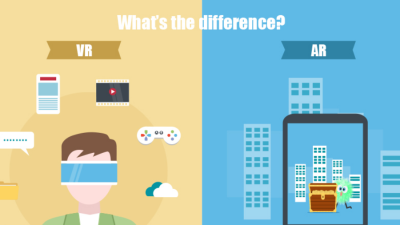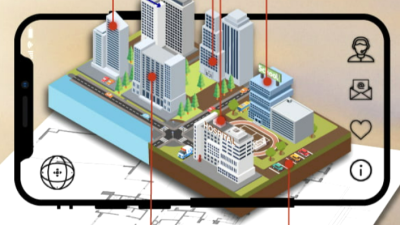Augmented reality represents one of the most significant technological evolutions in how we interact with digital information. Unlike conventional digital experiences confined to screens, AR breaks these boundaries by integrating virtual elements directly into our physical surroundings. This capability transforms everything from how we shop and learn to how professionals train and businesses operate.
The fundamental principle behind augmented reality involves enhancing our real-world environment with computer-generated information. This enhancement occurs through various sensory modalities—visual overlays being the most common, but also including audio and occasionally tactile feedback. The magic happens when the technology accurately recognizes physical spaces and seamlessly positions digital content within them, creating an integrated experience that feels natural.
Core Components of AR Systems
Every functioning augmented reality system relies on several critical components working together. At its heart, AR needs computing power—whether from a smartphone processor, dedicated headset, or connected cloud resources—to handle complex calculations in real-time. These calculations involve understanding the physical environment and determining where and how to display virtual content.
Cameras serve as the “eyes” of AR systems, capturing visual information about the surrounding world. Modern AR setups often employ multiple cameras to gather depth information and enable more precise positioning of virtual objects. Inertial measurement units (IMUs) track the movement and orientation of devices, ensuring digital content stays properly aligned as users move.
The display component delivers the combined real and virtual imagery to users. This might be a smartphone screen, transparent glasses, or specialized headsets with varying fields of view and resolution capabilities. The quality of this display significantly impacts how convincing and useful the AR experience feels.
Environmental Understanding
The most sophisticated aspect of augmented reality involves how systems comprehend physical surroundings. This process begins with image recognition—identifying visual patterns, objects, or designated markers in the environment. Object recognition has become increasingly advanced, allowing AR applications to identify everyday items without specialized markers.
Surface detection analyzes camera input to identify planes like floors, walls, tables, and other surfaces where virtual content might be placed. Depth mapping creates three-dimensional models of the environment, enabling virtual objects to interact realistically with physical spaces. Modern AR systems can recognize when objects should appear partially hidden behind real-world items, enhancing the illusion of integration.
Lighting estimation analyzes ambient conditions to render shadows and reflections that match the real environment, making digital objects appear as if they truly belong in the physical space. As discussed in a comprehensive research paper from MIT, these environmental understanding capabilities have progressed dramatically in recent years.
Processing the Reality-Virtual Blend
Once an AR system gathers environmental data, sophisticated software processes this information to create coherent augmented experiences. Computer vision algorithms analyze visual input to identify features, track motion, and understand spatial relationships. Simultaneous Localization and Mapping (SLAM) technology builds and updates maps of the environment while simultaneously tracking the user’s position within it.
Registration ensures precise alignment between virtual and physical elements—perhaps the most crucial technical challenge in AR. Poor registration results in floating or misaligned digital objects that break immersion. The rendering process generates the virtual content with appropriate perspective, lighting, and occlusion (hiding parts of virtual objects that should be obscured by physical items).
AR experiences often incorporate real-time adjustments based on changing environments or user actions. As explained in our previous article about interactive marketing, this responsiveness creates particularly engaging consumer experiences when applied to promotional campaigns.
From Simple to Sophisticated AR
Augmented reality implementations exist along a spectrum of complexity. Marker-based AR represents the simplest form, where the system recognizes specific images or QR codes to trigger and anchor digital content. While limited, this approach delivers reliable experiences with minimal processing requirements.
Location-based AR utilizes GPS, compass, and accelerometer data to place virtual content based on geographic coordinates. This underpins applications like navigation aids or location-specific information overlays in tourism apps.
Markerless AR represents the most advanced implementation, requiring no specific reference points but instead using computer vision to understand arbitrary environments. This approach enables the most natural and flexible AR experiences but demands significant processing power and sophisticated algorithms.
Hardware Evolution
The hardware supporting augmented reality continues to evolve rapidly. While smartphones and tablets currently serve as the most common AR platforms due to their ubiquity, dedicated headsets offer more immersive experiences with wider fields of view and specialized optics.
Display technologies for AR fall into several categories. Video see-through displays capture camera footage and overlay digital elements before showing the combined view to users. Optical see-through displays, often used in AR glasses, allow users to see the real world directly while projecting digital content onto transparent surfaces. Laser projection systems can draw images directly onto the retina, promising more natural viewing experiences in future devices.
Sensor arrays in modern AR devices frequently include depth sensors, infrared cameras, and specialized processors for spatial computing tasks. The integration of machine learning chips has dramatically improved environmental recognition capabilities.
Software Frameworks
Developers creating augmented reality experiences rely on specialized frameworks that handle the complex technical aspects of AR. Apple’s ARKit and Google’s ARCore provide robust foundations for smartphone-based AR development, handling environmental tracking and virtual object placement. More specialized platforms like Vuforia excel at image recognition for marker-based implementations.
These frameworks abstract away many technical challenges, allowing creators to focus on designing meaningful experiences rather than solving fundamental AR problems repeatedly. The democratization of development tools has accelerated AR adoption across industries and applications.
Real-World Integration Challenges
Despite significant advances, augmented reality still faces substantial challenges. Processing limitations on mobile devices constrain the complexity of AR experiences, though cloud computing increasingly supplements on-device capabilities. Battery consumption remains problematic, particularly for wearable AR devices intended for all-day use.
Environmental factors like poor lighting, reflective surfaces, or visually homogeneous spaces can confuse AR systems. Tracking stability—maintaining consistent positioning of virtual objects even as users move—requires continuous improvement. Occlusion handling, where virtual objects should be partially hidden by real ones, still presents difficulties in many scenarios.
The Future Path of AR Technology
The trajectory of augmented reality points toward ever more seamless integration between digital and physical realms. Advances in miniaturization promise more comfortable, less conspicuous wearable devices that could make AR an everyday technology rather than a specialized tool. Enhanced spatial mapping will allow virtual content to interact more convincingly with real environments, including physical simulations where digital objects respond to gravity, collisions, and other forces.
Context awareness represents perhaps the most transformative frontier, where AR systems understand not just what users see but what would be meaningful in specific situations. This contextual intelligence will enable more timely, relevant augmentation that anticipates user needs rather than simply responding to explicit commands.
Conclusion
Augmented reality works through a sophisticated symphony of hardware, software, and algorithmic innovation. From capturing visual information to processing environmental data and displaying convincingly integrated virtual content, each step requires precise engineering and thoughtful design. As these technologies continue to advance, the line between digital and physical experiences will blur further, opening new possibilities for how we work, learn, and interact with the world around us.
The technical foundations of AR may be complex, but the experiences they enable feel increasingly natural and intuitive. This accessibility, combined with practical applications across countless domains, suggests augmented reality will become an increasingly integral part of how we experience and interact with information in the coming years.





